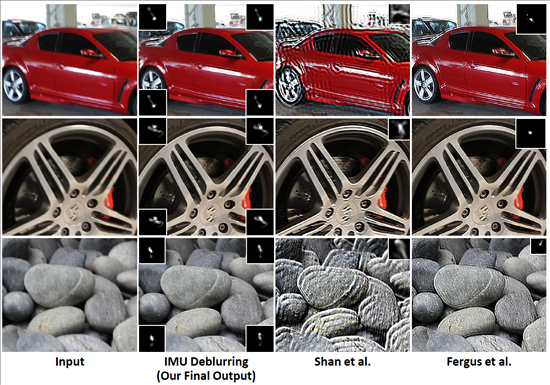A closer look at MSR: Image Deblurring using Inertial Measurement Sensors
I had a closer look at the new cool paper from Microsoft Research about Image deblurring and compared MSRs approach with two other state-of-the-art image deblurring methods.
What can go wrong while taking a picture?
“In fact there are many properties of a camera and a scene that can lead to spatially-varying blur: (1) depth dependent defocus blur, (2) defocus blur due to focal length variation over the image plane, (3) depth dependent blur due to camera translation, (4) camera roll motion, and (5) camera yaw and pitch motion when there are strong perspective effects. In this work, our goal is to handle only camera induced motion blur, i.e., spatially varying blur due to the last three factors...”
- [Image Deblurring using Inertial Measurement Sensors – Microsoft research]
So how do we want to treat this?
Shan et al. method computes a deblurred image using a unified probabilistic model of both blur kernel estimation and unblurred image restoration. This method requires only one single blurry picture and no additional hardware. https://bit.ly/9nebQU
Fergus et al. method assumes a uniform camera blurr over the image and requires the user to specify an image region without saturation effects (consistent color). https://bit.ly/9wkzke
Microsoft Research’s approach is similar to both methods mentioned above but uses additional hardware to obtain better results. The idea is rather simple: You compute the cameras motion while the picture was taken using accelerometers and perform a drift correction. Recovering rotation and translation of an object is possible when using at least six accelometers. The problems seem to be that accelerometers alone are too noisy for reliable computation of rotation. For more information check out the official paper here: https://bit.ly/aW57St
An ingeniously gifted colleague had a much cheaper and better idea: use faster shutter speeds!
Joke aside, have a look at the astonishing results of all the described techniques above:

[the original picture can be found in the paper on https://bit.ly/aW57St]
With kind regards and without a tripod,
Milan Kubicek, Lead Student Partner Bern